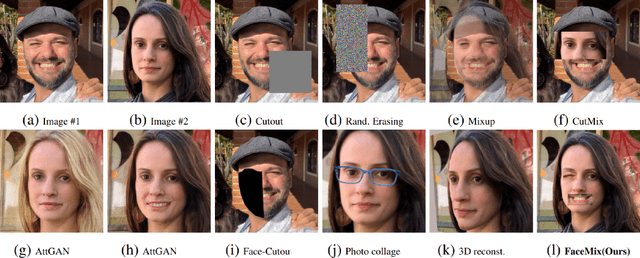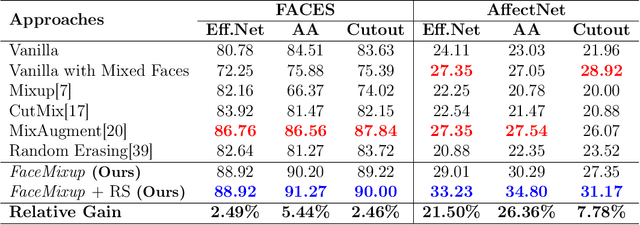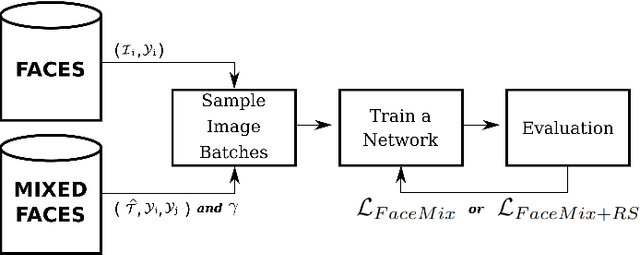Raoni F. da S. Teixeira
FaceMixup: Enhancing Facial Expression Recognition through Mixed Face Regularization
May 30, 2024



Abstract:The proliferation of deep learning solutions and the scarcity of large annotated datasets pose significant challenges in real-world applications. Various strategies have been explored to overcome this challenge, with data augmentation (DA) approaches emerging as prominent solutions. DA approaches involve generating additional examples by transforming existing labeled data, thereby enriching the dataset and helping deep learning models achieve improved generalization without succumbing to overfitting. In real applications, where solutions based on deep learning are widely used, there is facial expression recognition (FER), which plays an essential role in human communication, improving a range of knowledge areas (e.g., medicine, security, and marketing). In this paper, we propose a simple and comprehensive face data augmentation approach based on mixed face component regularization that outperforms the classical DA approaches from the literature, including the MixAugment which is a specific approach for the target task in two well-known FER datasets existing in the literature.
Os Dados dos Brasileiros sob Risco na Era da Inteligência Artificial?
May 03, 2022



Abstract:Advances in image processing and analysis as well as machine learning techniques have contributed to the use of biometric recognition systems in daily people tasks. These tasks range from simple access to mobile devices to tagging friends in photos shared on social networks and complex financial operations on self-service devices for banking transactions. In China, the use of these systems goes beyond personal use becoming a country's government policy with the objective of monitoring the behavior of its population. On July 05th 2021, the Brazilian government announced acquisition of a biometric recognition system to be used nationwide. In the opposite direction to China, Europe and some American cities have already started the discussion about the legality of using biometric systems in public places, even banning this practice in their territory. In order to open a deeper discussion about the risks and legality of using these systems, this work exposes the vulnerabilities of biometric recognition systems, focusing its efforts on the face modality. Furthermore, it shows how it is possible to fool a biometric system through a well-known presentation attack approach in the literature called morphing. Finally, a list of ten concerns was created to start the discussion about the security of citizen data and data privacy law in the Age of Artificial Intelligence (AI).
 Add to Chrome
Add to Chrome Add to Firefox
Add to Firefox Add to Edge
Add to Edge